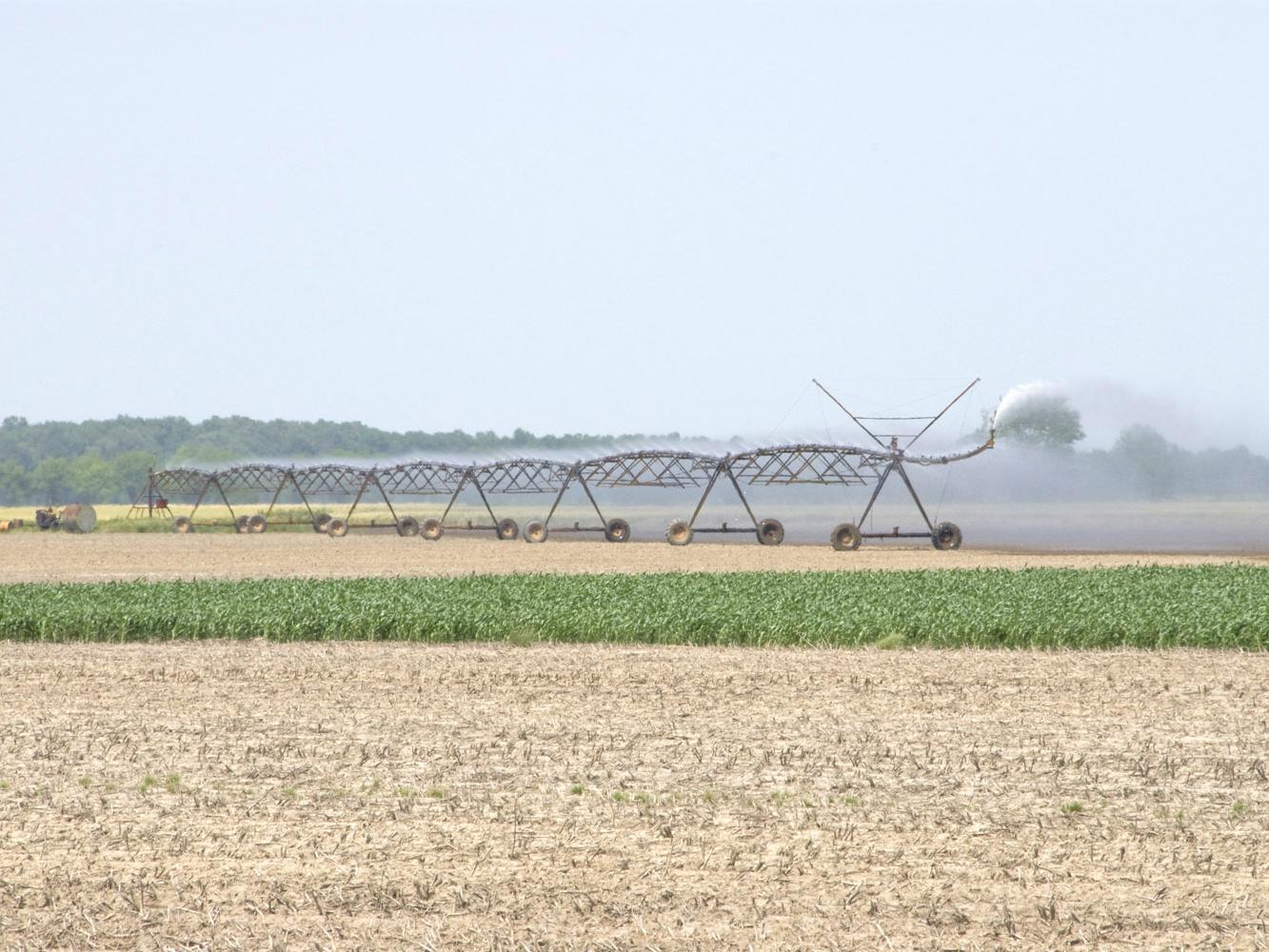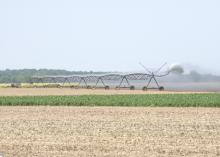Information Possibly Outdated
The information presented on this page was originally released on July 13, 2012. It may not be outdated, but please search our site for more current information. If you plan to quote or reference this information in a publication, please check with the Extension specialist or author before proceeding.
Recent hot, dry weather putting a hurt on crops
MISSISSIPPI STATE – An ideal growing season through mid-June turned into a hot and dry situation that stressed the state’s crops until widespread rains came after the Fourth of July.
The state has experienced very hot and dry weather in the last several weeks, but Mississippi State University experts remain optimistic about the overall potential.
Trent Irby, soybean specialist with the MSU Extension Service, said 90 percent of the state’s soybean crop was in the reproductive growth phase by the second week of July.
“Severe drought stress during reproduction can impact yield potential,” Irby said. “Lack of moisture affects the pod load of the crop -- or the number of seeds within a pod and their size. The scattered showers were welcome, but there are still areas that are very short on moisture.”
In mid-June, corn looked like it might break record yields. By mid-July, Erick Larson, Extension grain crops agronomist, said the outlook was less promising but still better than the last three years.
“Dry land, or non-irrigated, and later-planted corn was hurt most by the recent heat and dry conditions,” Larson said. “The rains should help corn that is still green, but stressed corn does not really recover.”
Dennis Reginelli is the Extension area agronomist working with row crops in Webster and Noxubee counties.
“Soybeans will be the biggest losers from the heat and drought of June,” Reginelli said. “We planted in early April but didn’t get any rain during June, so we lost our bloom set in the crop. Foliage is great, but the yield potential will be down.”
Reginelli said because the corn in his area was planted early, dry weather should not reduce its yield significantly.
“If this crop had been planted in early to mid-April, it would be a disaster,” Reginelli said. “We have irrigated corn fields that should yield 220 to 240 bushels an acre.”
Historically, much of the row crops in east Mississippi have been grown on dry land acres, but Reginelli said local suppliers have seen their orders for irrigation pivots double from last year.
Jay Phelps, Extension area agronomy agent in north-central Mississippi, said the 100-degree, dry weather hurt crops in his area. Only about 5 percent are irrigated.
“High temperatures resulted in poor pollination of some corn,” Phelps said. “None of our crops are a complete loss, so the rains that just came will improve their overall condition and potential yields.”
Heat and drought do not have as much impact where irrigation is plentiful, such as in the central Delta, where Jerry Singleton, Extension area agronomy agent, works. Up to 75 percent of the Delta soils are irrigated, and these acres look good. It is the dry land acres that are suffering.
“Soybeans planted following wheat have been severely hurt by the lack of moisture and hot weather,” Singleton said. “Current rains will help the surviving plants, but the average yields will be significantly down.”
Mississippi’s decrease in yield potential is less than the expected national decrease. John Michael Riley, Extension agricultural economist, said prices for some row crops have gone up significantly as growing conditions went bad.
“September corn futures are trading around $7 a bushel. These same futures were trading around $5.20 a bushel in early June,” Riley said. “Prices have been surging since mid-June as the condition of the crop has deteriorated.”
At the beginning of June, just 8 percent of the national corn crop was rated “poor” or “very poor” by the U.S. Department of Agriculture. Dry, hot weather pushed that number to 30 percent. As a result of these conditions, USDA now estimates a national corn yield of 146 bushels an acre, 20 bushels lower than their June estimate.
“There was an expectation of a bin-busting crop when plantings got off to an early start, and that expectation pushed prices lower,” Riley said. “Now that the drought has worsened and encompassed more and more acres, that expectation has gone up in smoke.”
Soybean prices have experienced a similar trend.
“In early June, the September futures contract was trading near $13 per bushel but are now around $15.50,” Riley said. “The national soybean yield estimate was lowered to 40.5 bushels per acre in the recent USDA report, a drop from 43.9 bushels an acre a month ago.”













